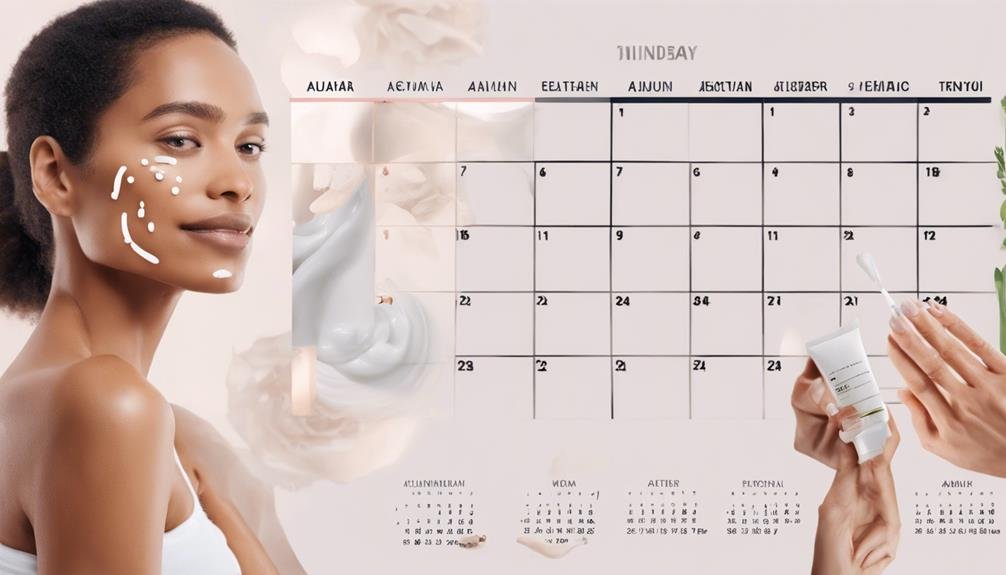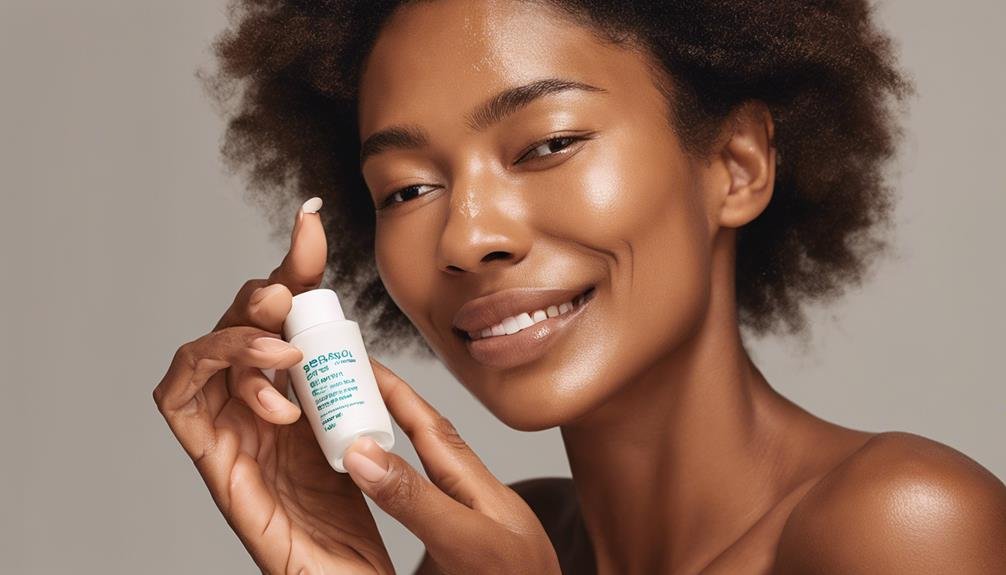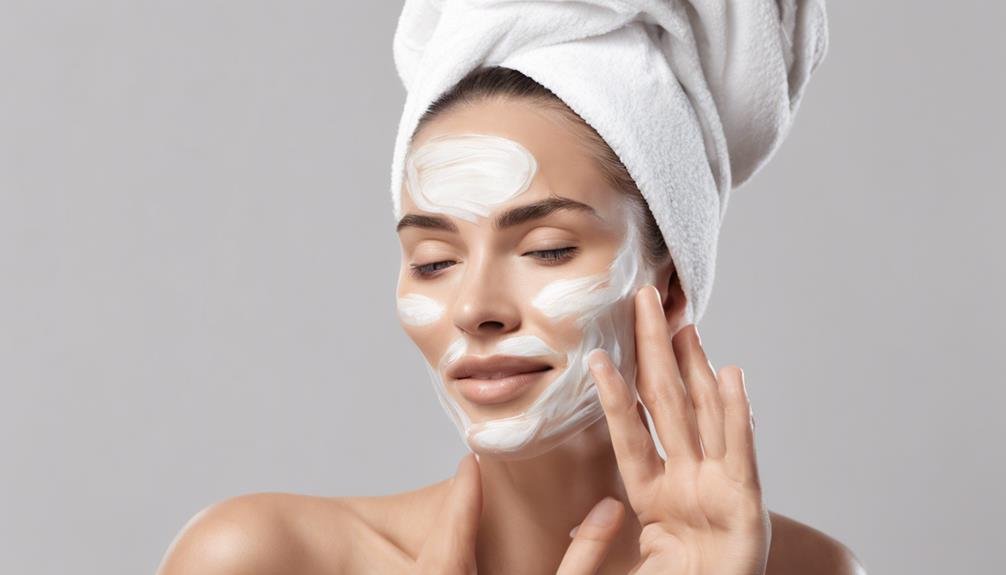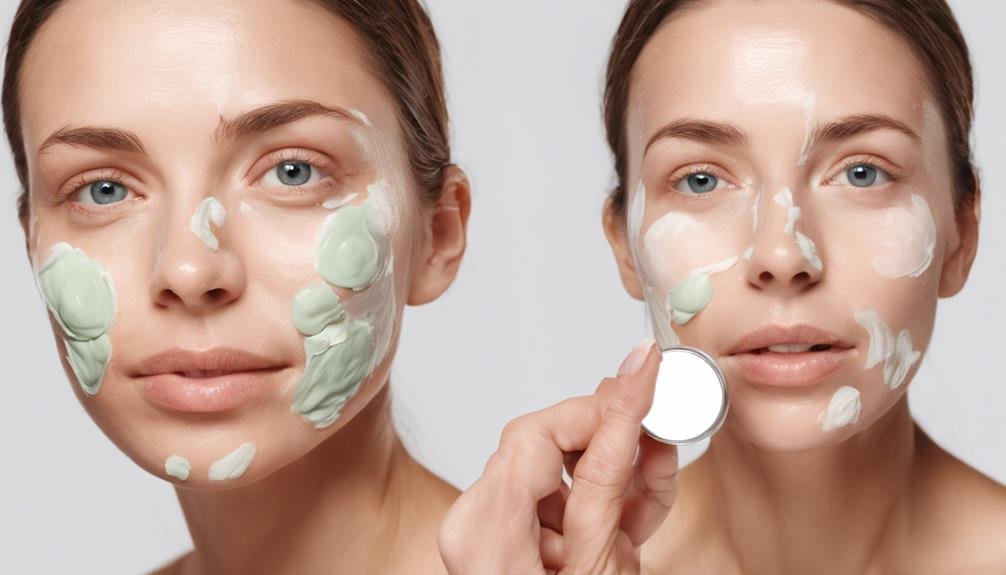You might not be aware that using retinol in the right way can significantly impact its effectiveness on your skin. Understanding the proper application techniques and frequency of use can make a notable difference in achieving desired results. By mastering these essential steps, you can unlock the full potential of retinol for your skincare routine. Let's explore the key strategies for harnessing the power of retinol and maximizing its benefits for your skin.
Key Takeaways
- Start slow with retinol to prevent irritation and allow skin adjustment.
- Always use SPF daily to protect skin from sun damage.
- Moisturize regularly to combat dryness associated with retinol use.
- Consult a dermatologist for guidance on retinol usage and potential side effects.
- Consider incorporating hydrating ingredients to counteract dryness and enhance retinol benefits.
Benefits of Retinol
Have you ever wondered what makes retinol such a powerhouse ingredient in skincare products? Retinol, a form of vitamin A, is known for its remarkable benefits in improving skin texture, reducing the appearance of fine lines and wrinkles, and promoting a more youthful complexion. This wonder ingredient works by increasing cell turnover, stimulating collagen production, and fading hyperpigmentation, resulting in smoother, firmer, and more even-toned skin.
One of the key advantages of retinol is its ability to unclog pores and prevent acne breakouts, making it a popular choice for individuals struggling with blemishes. Additionally, retinol can help minimize the size of pores and improve overall skin tone, giving you a radiant and healthy glow.
Research has shown that consistent use of retinol can lead to significant improvements in the skin's appearance over time. By incorporating this potent ingredient into your skincare routine, you can achieve a more youthful, revitalized complexion that radiates health and beauty.
Choosing the Right Product
When selecting a retinol product for your skincare routine, it's crucial to consider several factors to ensure its effectiveness and compatibility with your skin type. Here are some key points to keep in mind:
- Ingredient List: Look for products with a higher concentration of retinol (around 0.25% to 1%) for optimal results.
- Formulation: Choose a formula that suits your skin type, whether it's a cream, serum, or oil-based product.
- Packaging: Opt for products that come in opaque, airtight containers to protect the retinol from light and air exposure, which can degrade its potency.
- Additional Ingredients: Consider products that contain moisturizing or soothing ingredients like hyaluronic acid or niacinamide to counteract potential irritation from retinol.
Patch Test Instructions
To ensure that the retinol product you've chosen won't cause adverse reactions on your skin, conducting a patch test is a prudent step. Before applying retinol to your face, it's essential to test it on a small area of skin first. Here's how to perform a patch test:
- Choose a small, inconspicuous area on your skin, like behind your ear or on your inner forearm.
- Apply a small amount of the retinol product and gently massage it into the skin.
- Leave the product on for 24 hours without washing it off.
- Monitor the area for any signs of redness, itching, burning, or irritation during this period.
- If you experience any adverse reactions, discontinue use immediately.
Patch testing helps determine if your skin is sensitive to retinol and can prevent potential irritation when applying it to your face. Remember, it's better to be cautious and conduct a patch test before incorporating retinol into your skincare routine.
How to Apply Retinol
Applying retinol correctly is crucial for maximizing its benefits and minimizing potential side effects. To ensure you're getting the most out of your retinol product, follow these key steps:
- Start Slow: Begin by applying retinol 1-2 times a week to allow your skin to adjust gradually.
- Cleanse First: Wash your face with a gentle cleanser before applying retinol to ensure your skin is clean and ready to absorb the product.
- Pea-sized Amount: A little goes a long way with retinol. Use a pea-sized amount for your entire face to avoid irritation.
- Moisturize After: After applying retinol, follow up with a moisturizer to help combat any dryness or peeling that may occur.
Frequency of Use
For optimal results with retinol, consistency in the frequency of use is key. When incorporating retinol into your skincare routine, it's important to start slow and gradually increase the frequency to prevent irritation. Below is a guide to help you navigate how often you should use retinol based on your skin type and the product's strength:
| Skin Type | Low Strength (0.25-0.5%) | Medium Strength (0.75-1%) | High Strength (over 1%) |
|---|---|---|---|
| Sensitive | 1-2x a week | 2-3x a week | Once a week |
| Normal | 2-3x a week | Every other day | Every day |
| Acne-Prone | 2-3x a week | Every other day | Every day |
Combining Retinol With Other Ingredients
When using retinol in your skincare routine, it's important to consider how it interacts with other ingredients. Retinol can be a powerful ally in your quest for healthy skin, but combining it with certain products can either enhance or hinder its effectiveness. Here are some tips to help you make the most out of your retinol regimen:
- Moisturizers: Hydrating ingredients like hyaluronic acid can help counteract the potential dryness and irritation that retinol may cause.
- Sunscreen: Always pair retinol use with broad-spectrum SPF during the day to protect your skin from increased sensitivity to the sun.
- Vitamin C: Combining retinol with vitamin C can boost collagen production and provide antioxidant benefits for brighter, firmer skin.
- Avoid Harsh Acids: Be cautious when using retinol alongside strong exfoliating acids like AHAs or BHAs, as this may lead to irritation and compromise your skin barrier.
Sun Protection Tips
To safeguard your skin from the harmful effects of UV rays, proper sun protection is essential when incorporating retinol into your skincare routine. Retinol can increase your skin's sensitivity to the sun, making it more prone to damage.
Start by applying a broad-spectrum sunscreen with an SPF of 30 or higher every morning, even on cloudy days. Reapply every two hours if you're outdoors. Opt for a hat and sunglasses for added protection. Seek shade during peak sun hours, typically between 10 a.m. and 4 p.m.
Remember that sun protection isn't just for the beach; UV rays can penetrate windows and affect your skin even indoors. Avoid tanning beds as they can also contribute to skin damage.
Managing Irritation
To effectively manage irritation when using retinol in your skincare routine, it's crucial to understand that mild irritation can be common when starting this potent ingredient. While this can be a frustrating aspect of incorporating retinol, there are strategies you can employ to help minimize discomfort and maximize the benefits of this powerful compound.
Here are some tips to help you manage irritation:
- Start Slow: Begin by using retinol only a few times a week to allow your skin to adjust gradually.
- Moisturize: Hydrate your skin with a gentle, non-comedogenic moisturizer to help combat dryness and irritation.
- Use Sunscreen: Protect your skin from UV damage by applying a broad-spectrum sunscreen daily, as retinol can increase sun sensitivity.
- Consult a Professional: If irritation persists or becomes severe, seek advice from a dermatologist to ensure you're using retinol correctly for your skin type.
Adjusting to Retinol
Retinol can be a transformative addition to your skincare routine, but adjusting to this potent ingredient requires patience and care. When incorporating retinol into your regimen, start slowly to allow your skin to acclimate.
Begin by using it once or twice a week, gradually increasing frequency as tolerated. This approach helps minimize the likelihood of irritation and allows your skin to build tolerance over time.
It's common to experience some dryness, redness, or flakiness when starting retinol. To combat these effects, ensure you moisturize regularly and use a gentle cleanser.
Additionally, always apply sunscreen during the day to protect your skin, as retinol can increase sensitivity to the sun.
Monitoring Results
When evaluating the effects of retinol on your skin, it's crucial to monitor the results closely. Here are some tips to help you effectively monitor the impact of retinol on your skin:
- Consistent Observations: Regularly examine your skin for changes in texture, tone, and any new developments.
- Keep a Journal: Record your progress, noting any improvements or concerns to discuss with your dermatologist.
- Photos for Comparison: Take before and after photos in the same lighting to track changes that may be subtle over time.
- Patience is Key: Remember that results take time, so be patient and give your skin a chance to adjust to the retinol.
Handling Common Side Effects
Experiencing common side effects while using retinol is a normal part of the process. Your skin may go through an adjustment period as it gets used to the retinol, which can result in some temporary challenges. Here are some common side effects you might encounter and how to manage them effectively:
| Common Side Effects | How to Manage | Tips |
|---|---|---|
| Dryness or Flakiness | Increase moisturization | Choose a rich, non-comedogenic moisturizer |
| Redness or Irritation | Reduce frequency of use | Start with a lower concentration of retinol |
| Sensitivity to the sun | Apply sunscreen daily | Opt for a broad-spectrum SPF of 30 or higher |
Expert Recommendations
For optimal results when incorporating retinol into your skincare routine, it's crucial to consider expert recommendations. Dermatologists and skincare specialists offer valuable advice to make the most of this potent ingredient. Here are some expert recommendations to guide you:
- Start Slow: Begin by using retinol 1-2 times a week to allow your skin to acclimate.
- Use Sunscreen: Always apply sunscreen during the day as retinol can increase sun sensitivity.
- Moisturize: Hydrate your skin with a non-comedogenic moisturizer to prevent dryness and irritation.
- Consult a Professional: If you're unsure about using retinol or experience severe side effects, consult a dermatologist for personalized guidance.
Following these expert recommendations can help you navigate the world of retinol effectively, ensuring that you achieve the desired results while keeping your skin healthy and radiant.
Frequently Asked Questions
Can Retinol Be Used During Pregnancy or Breastfeeding?
During pregnancy or breastfeeding, avoid using retinol unless advised by a healthcare provider. Studies suggest potential risks. Prioritize safe alternatives. Consult a professional to ensure the safety of skincare products for you and your baby.
Is It Necessary to Apply Retinol to the Neck and Chest?
You should apply retinol to your neck and chest as they are areas prone to aging. Research shows that neglecting these areas can lead to visible signs of aging. Consistency in application helps maintain youthful skin.
Can Retinol Cause Hair Loss or Thinning?
Yes, retinol can cause hair loss or thinning in some individuals. It's essential to monitor any changes and consult a dermatologist if concerned. Adjusting usage or considering alternative products may be necessary for minimizing such side effects.
Should Retinol Be Used in the Morning or at Night?
You should use retinol at night. This allows for better absorption and effectiveness since retinol can break down in sunlight. Nighttime application also minimizes the risk of skin irritation and enhances its anti-aging benefits.
Can Retinol Be Used on Sensitive Skin or Rosacea?
Sure! For sensitive skin or rosacea, retinol can be tricky. To test, apply a small amount every other night. If tolerated, gradually increase frequency. Use a gentle moisturizer to minimize irritation and always wear sunscreen.
Conclusion
In conclusion, mastering the art of using retinol can lead to skin that glows like the sun. By starting slow, being consistent, and protecting your skin with sunscreen, you can unlock the full potential of this powerhouse ingredient. Remember, Rome wasn't built in a day, and neither is perfect skin. Stay patient, stay diligent, and watch as your complexion transforms into a work of art.







